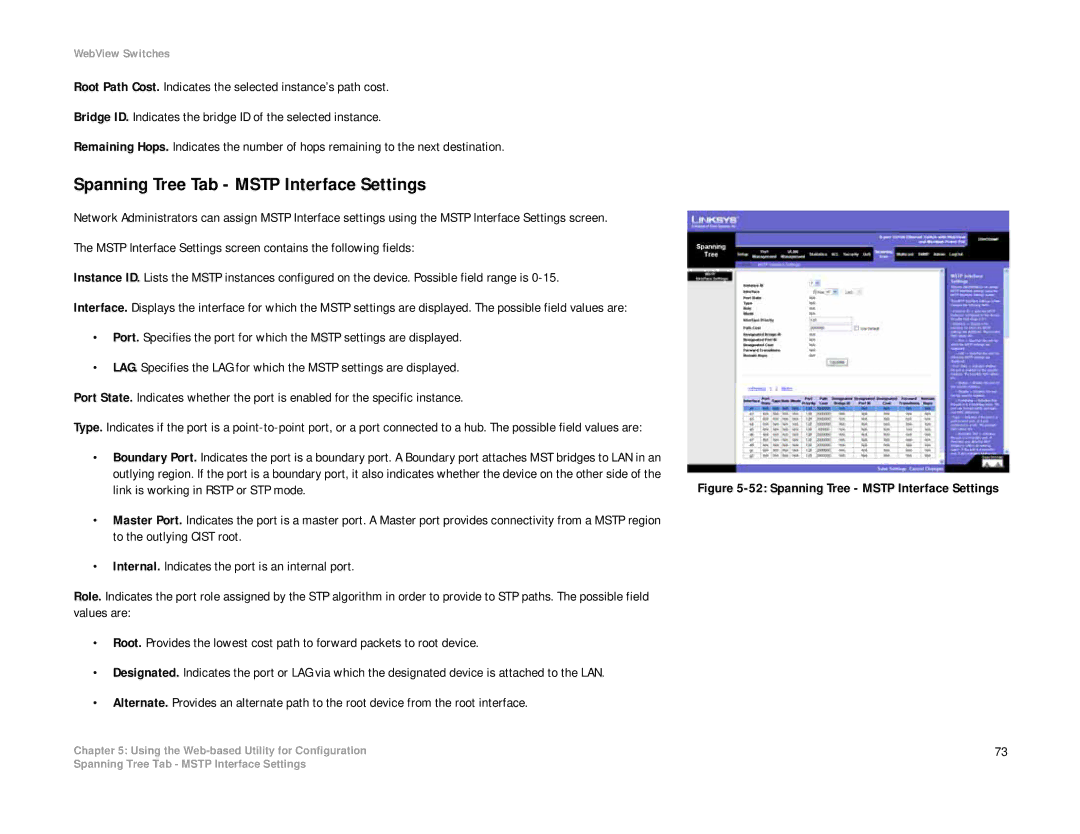
WebView Switches
Root Path Cost. Indicates the selected instance’s path cost.
Bridge ID. Indicates the bridge ID of the selected instance.
Remaining Hops. Indicates the number of hops remaining to the next destination.
Spanning Tree Tab - MSTP Interface Settings
Network Administrators can assign MSTP Interface settings using the MSTP Interface Settings screen. |
|
The MSTP Interface Settings screen contains the following fields: |
|
Instance ID. Lists the MSTP instances configured on the device. Possible field range is |
|
Interface. Displays the interface for which the MSTP settings are displayed. The possible field values are: |
|
• Port. Specifies the port for which the MSTP settings are displayed. |
|
• LAG. Specifies the LAG for which the MSTP settings are displayed. |
|
Port State. Indicates whether the port is enabled for the specific instance. |
|
Type. Indicates if the port is a |
|
• Boundary Port. Indicates the port is a boundary port. A Boundary port attaches MST bridges to LAN in an |
|
outlying region. If the port is a boundary port, it also indicates whether the device on the other side of the | Figure |
link is working in RSTP or STP mode. | |
• Master Port. Indicates the port is a master port. A Master port provides connectivity from a MSTP region |
|
to the outlying CIST root. |
|
• Internal. Indicates the port is an internal port. |
|
Role. Indicates the port role assigned by the STP algorithm in order to provide to STP paths. The possible field |
|
values are: |
|
• Root. Provides the lowest cost path to forward packets to root device. |
|
• Designated. Indicates the port or LAG via which the designated device is attached to the LAN. |
|
• Alternate. Provides an alternate path to the root device from the root interface. |
|
Chapter 5: Using the | 73 |
Spanning Tree Tab - MSTP Interface Settings
